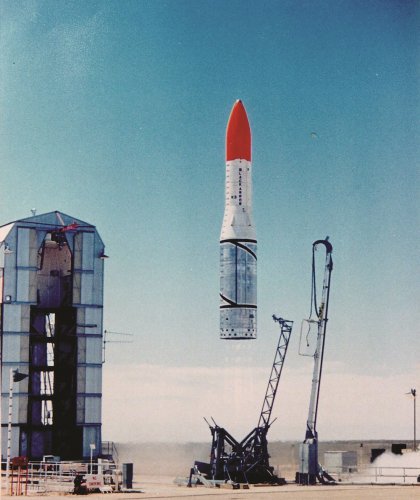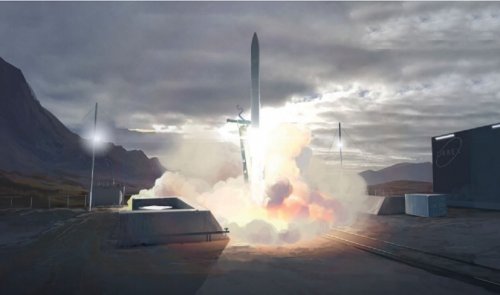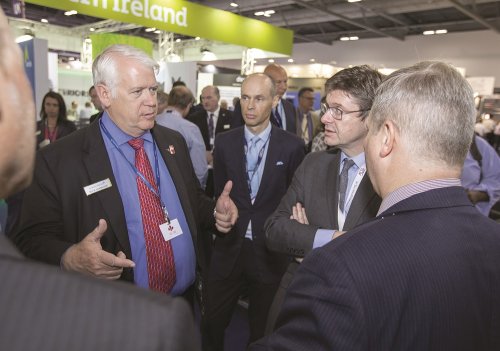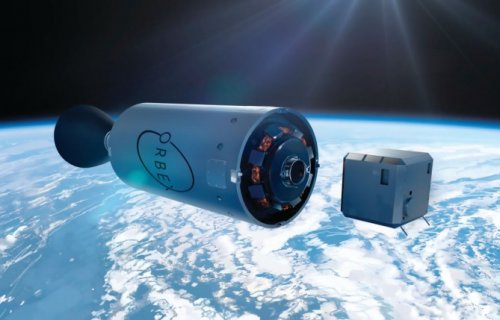On Oct. 28, 1971, a Black Arrow rocket lifted off from the Woomera test range in Australia. The rocket placed into orbit a small satellite called Prospero to study the effects of the space environment on satellites. It marked the first time a British-built rocket placed a satellite into orbit. It was also the last time a British-built rocket placed a satellite in orbit.
The British government canceled the Black Arrow program three months earlier but allowed this final launch to proceed because the rocket had already been shipped to Australia. The United Kingdom became the first country to develop an orbital launch capability, only to give it up.
Now, after years of efforts within the British government, and lobbying by the country’s space industry, the U.K. is taking steps to get back in the launch business. In a series of announcements at the Farnborough International Airshow outside London in mid-July, government officials described how they would re-establish a launch capability, this time using sites in the country but vehicles, in many cases, developed outside of it.
Scottish spaceport
Creating a U.K. spaceport has been a topic of discussion for years. For most of that time, though, the focus has been on converting an existing airport, be it a former military base or underutilized commercial airport, into a launch site for suborbital vehicles like Virgin Galactic’s SpaceShipTwo or, possibly, air-launch systems. By 2015 the government had narrowed the list to six airports.
A shift in industry interest to smallsats and small launch vehicles, though, prompted a shift in strategy. In a July 15 announcement, the government announced it was selecting not one of the six airports from that earlier shortlist but a new vertical launch site in northern Scotland.
“We’ve kept things under the radar for a little bit,” said Roy Kirk, project manager for Highlands and Islands Enterprise, the Scottish economic development agency that received $3.3 million from the government to start work on the launch site on the A’Mhoine Peninsula in the Sutherland region on Scotland’s northern coast.
That site offers an opportunity to develop a launch complex for small, vertically launched rockets that can fly to the north. “It’s a really exciting opportunity because of the access to the orbits that we’re looking for,” he said, such as sun-synchronous and other high-inclination orbits.
The facility would be modest, with a launch pad and related structures in a small footprint. “We are not looking at ‘rocket alley’ in Cape Canaveral,” he said. “We are more looking at Rocket Lab’s setup in New Zealand.”
Kirk said that, in addition to the seed funding from the British government, Highlands and Islands Enterprise has “committed in principle” an additional $13 million needed to build out the initial spaceport infrastructure. It’s also started the environmental and other regulatory processes needed to build the launch site, with a goal of having it ready in 2020.
Those regulatory issues could be the biggest challenge to the site, he acknowledged, as his organization and others worked to win public support for it. “We have a timeline that shows we can achieve this, but there are undoubtedly challenges in the planning process,” he said. “We believe with the support of the local community, and with the support of other people that we’ve got a great case. But that will have to be tested.”
Launch vehicles
The U.K. Space Agency announced the selection of the spaceport site without saying who would use it. It waited until the next day to reveal what companies had agreed to launch from the site with additional government support.
In one award, Lockheed Martin will receive $31 million to establish launch operations in Sutherland. That funding also covers development of an upper stage, called the Small Launch Orbital Maneuvering Vehicle, to be built in the U.K. by Moog, as well as a technology demonstration cubesat for Orbital Micro Systems, a company that plans a constellation of such satellites for collecting weather data.
“The countdown to the first rocket launch from U.K. soil has just begun,” said Rick Ambrose, executive vice president of Lockheed Martin’s space business, at a briefing about the announcement at the air show.
The curious part of the announcement, though, was that Lockheed Martin didn’t say what rocket would be lifting off from U.K. soil. The company doesn’t have a vehicle of its own, and all the company showed was a generic-looking rocket, painted black except for the company logo and Union Jack.
“We’ll use an affordable, flight-proven commercial launcher built specifically for small satellites,” said Patrick Wood, Lockheed Martin’s U.K. country executive for space. “We’ll have more details on the launcher in the very near future.”
There’s been widespread speculation that the vehicle will be Rocket Lab’s Electron, particularly since Lockheed invested in the company in 2015. But Lockheed officials declined to confirm that was the vehicle they planned to use, even while hinting that was their preferred choice.
“We’ve worked very close with that particular organization. We understand their launch vehicle very well,” Wood said. “We are a strategic investor in Rocket Lab and that’s where we’re focusing at the moment.”
There’s little question about the rocket the other company picked by the British government will use. Orbex, a small startup headquartered in the U.K., is developing a small rocket called Prime that it plans to launch from Sutherland. It received $7 million from the U.K. Space Agency to further its work.
Orbex had been in stealth mode before the announcement, but made a very public debut at Farnborough, with a large exhibit at the show. It also revealed it has raised $40 million through a combination of grants from the British government and European agencies as well as private investment.
Chris Larmour, chief executive of Orbex, argued that while there are several dozen small launch vehicle efforts underway worldwide, only a smaller number have the combination of technical expertise and financial support to be taken seriously. “I think Orbex, with this announcement, has joined that family,” he said.
The funding will allow Orbex to grow its company from about 15 employees now to 40 or more by early 2019. The company has been testing engines and working on other subsystems, with a goal of being ready for a first flight in 2021.
One challenge it faces is sharing the launch site with Lockheed Martin. Orbex uses propane fuel for its rocket while Electron — if that is indeed what Lockheed Martin selects — uses kerosene. Larmour said one possible solution would be to have two separate pads, but share some infrastructure.
“We’ll spend the next few months talking to all kinds of stakeholders involved,” he said. “Where it’s helpful to work in common, we’ll do it.”
Consolation prizes
The decision by the U.K. Space Agency to support a vertical launch site in Scotland is a setback to the airports that had been lobbying for years to win a spaceport designation. The agency, though, said it will offer more than $2.5 million in funds to such airports to allow them to purse spaceport plans “subject to business case.”
One such airport thinks it has a business case. Cornwall Airport Newquay signed an agreement with Virgin Orbit at Farnborough to that could lead to LauncherOne missions flying from that airport in southwestern England.
Patrick McCall, managing director of Virgin Group and chairman of the board of Virgin Orbit, said he was interested using Cornwall to meet customer needs. “A lot of people launch from different parts of the world. It helps to be able to launch into different orbits,” he said. “Our customers are based here, so we want to support them with launches.”
Another factor is a desire to help the British space industry. “Richard [Branson] and I are both British, and we want to support the U.K. space industry the best we can,” he said. “We think this is a fantastic opportunity.”
Other launch vehicle developers in the U.K. are also optimistic they’ll eventually win support for their vehicle projects. One such company is Skyrora, a British-based company with a research and development center in Ukraine that is developing a small launch vehicle with a first suborbital test flight planned for 2019.
Skyrora has linked itself to Britain’s launch history. While the vehicle design is new, it uses the same kerosene and hydrogen peroxide propellants as Black Arrow and the company plans tests at some of the same locations used in Black Arrow’s development. “We’re proud to be following in its footsteps 50 years on,” the company states on its website.
Robin Hague, lead engineer at Skyrora, said he’s optimistic that this new launch initiative will be more successful than Black Arrow, but that the government’s announcements at Farnborough can’t be the end of its support for the industry.
“It’s a tremendous beginning for U.K. launch,” he said, “but there’s a lot more to do, I think.”
This article originally appeared in the July 30, 2018 issue of SpaceNews magazine.
- SN Military.Space | Space reforms near decision point • SMC Commander: Procurement slow but not broken • Mattis downplays impact of Trump trade wars
- Why Sierra Nevada’s owners are betting big on Dream Chaser
- #SpaceForce takes Capitol Hill by storm • What is the true cost of space programs? • Space budget deep dive
- LEO and MEO broadband constellations mega source of consternation
- SpaceX takes top honors in SpaceNews Awards for Excellence & Innovation
Share with your friends





(0) Comments
This article comments are currently no :(